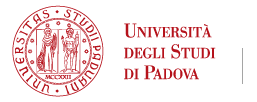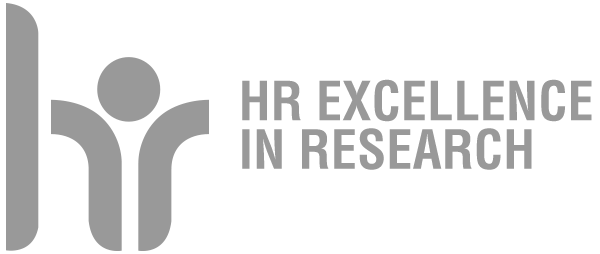

FRANCESCO ARGENTON
Title: Professore ordinario
SSD: BIO/06 - Comparative Anatomy and Citology
Address: VIA U. BASSI, 58/B - PADOVA
Phone: 0498276229
E-mail: francesco.argenton@unipd.it
Curriculum
Francesco Argenton,
Born, 7-1-1961
Abilitazione alla Prima Fascia settore 05/F1 (BIO13), 22 Gennaio 2014, Ministero
dell’Università e della Ricerca Scientifica
Abilitazione alla Prima Fascia settore 05/B2 (Anatomia Comparata e Citologia), 24 Febbraio
2014, Ministero dell’Università e della Ricerca Scientifica
Education/Training:
1986 Università degli Studi di Padova- Laurea in Scienze Biologiche with thesis on “Protozoans resistance to heavy metals”
1988 Università degli Studi di Padova - Laurea Scienze Naturali with thesis on “Molecular mechanisms regulating cell-cell interactions”
1992 Università degli Studi di Padova - PhD in Comparative Endocrinology with thesis on “Transcriptional control of GH gene in teleosts”
1992-1993 The Weizmann Institute of Science, Rehovot, Israel. Post-Doc on “Transcriptional regulation of Insulin gene in teleosts”
1993-1998 Università degli Studi di Padova - Post-Doc on “Transcriptional Regulation of GH and Insulin genes”
Employments
1) Istituto di Semeiotica Medica: Università degli Studi di Padova ITALY.
Fellowship From 1-1-82 to 31-12-83
2) Dipartimento di Biologia, Università degli Studi di Padova ITALY.
Ph.D. fellowship (MURST) From 1-10-88 to 30-9-92
3) Dept. of Biochemistry: The Weizmann Inst. of Science, Rehovot ISRAEL.
Post-doc fellowship (EMBL+Weizmann Institute) From 1-9-92 to 7-10-93
4) Ist. Zooprofilattico delle Venezie, Padova ITALY
consultant From 15-2-93 to 31-8-94
5) Dipartimento di Biologia: Università degli Studi di Padova ITALY.
Post-doc fellowship (EU) From 10-9-94 19-7-98
6) Dipartimento di Biologia: Univ. of Padova ITALY
Ricercatore Universitario BIO13 (Applied Biology) From 20-7-98 to 28-2-2006
7) Dipartimento di Biologia: Università degli Studi di Padova ITALY
Associate professor BIO13 (Applied Biology) from 1-3-2007 to 31-3-2016
8) Dipartimento di Biologia: Università degli Studi di Padova ITALY
Full professor BIO13 (Applied Biology) from 1-4-2016 to now
International Experience
1) From July to August 1991: PhD visiting Student in the Laboratoire de Biologie Moleculaire et Génie Génétique del Professor Josef Martial at l'Institute de Chimie dell'Univérsité de Liège (Belgium).
2) From September 1992 to October 1993: Post doc in the laboratory of Prof. Michael Walker, Department of Biochemistry at the Weizmann Institute of Science (Israel).
3) From April to May 1994, 1996, 1998: laboratory of Prof. Nisson Schechter, Department of Biochemistry and Cell Biology, State University of New York at Stony Brook (USA).
4) July 97: laboratory of Prof. Filip Volckaert, Department of Zoology, University of Leuven (Belgium).
5) April 1998: Visiting scientist in the laboratory of Prof. Nisson Schechter, State University of New York at Stony Brook (USA).
6) May 2001: Department of Developmental Biology University of Freiburg, Germany
7) July and August 2012: Visiting Professor at the University of Oregon at Eugene, Dept. of Neuroscience and Zebrafish International Resource Centre.
8) July and August 2013: Visiting Scientist at the Johns Hopkins University School of Medicine.
Research area
Developmental signalling pathway: from its essentials to applied biosensors
Working with zebrafish has opened a wide range of possibilities to explore the relations between transcription factors and cell fate decisions. In the last years we have indeed explored this field taking advantage of transgenic technologies and now we lead a new approach in the characterization of signalling pathways involved in organ and tissue development and homeostasis. Our approach is using artificial ultra-enhancers built by polymerization of transcription factor responsive elements. These ultra-enhancers can be used to reveal in vivo, at single cell resolution, regions of activities for the main genetic pathways controlling proliferation and/or differentiation. With this approach we have been able to prepare a collection of living biosensors that are currently used world wide for the phenotyping of mutants and tumours, drug screening, characterization of gene functions both in normal development and models of disease.
We think this approach is the dawn of a new era of quantitative biology able to exploit zebrafish transparency and genetic manipulability (CRISPR/Cas) together with linearity and sensitivity of ratiometric fluorescent signals, for the production of miniaturized models of disease at single cell resolution.
Proposals for thesis
STAT3 is a gene encoding a nuclear transcription factor controlling stemness, NR3C1 is the gene encoding the Glucocorticoid receptor, a nuclear transcription factor (glucocorticoid is a widely used class of drugs) and Hif1a is the nuclear transcription factor that is responsible for hypoxia response. Data from literature indicate that this three transcription factors have strong interactions in controlling respiration, metabolism and proliferation.
Our laboratory is aimed at:
1) Define the Gene Regulatory Network of STAT3, NR3C1and HIF1a in simple model systems
2) Define the molecular mechanisms coordinating nuclear and mitochondrial expression by STAT3, NR3C1 and HIF1a in simple model systems
3) Define the impact of Hif1a, NR3C1, STAT3 mutations on mitochondria biology
4) Target the mitochondrial functions of STAT3, NR3C1 and HIF1a in regenerating tissues and small cancer models
Last update: 04/07/2025





